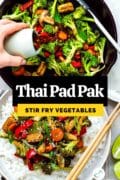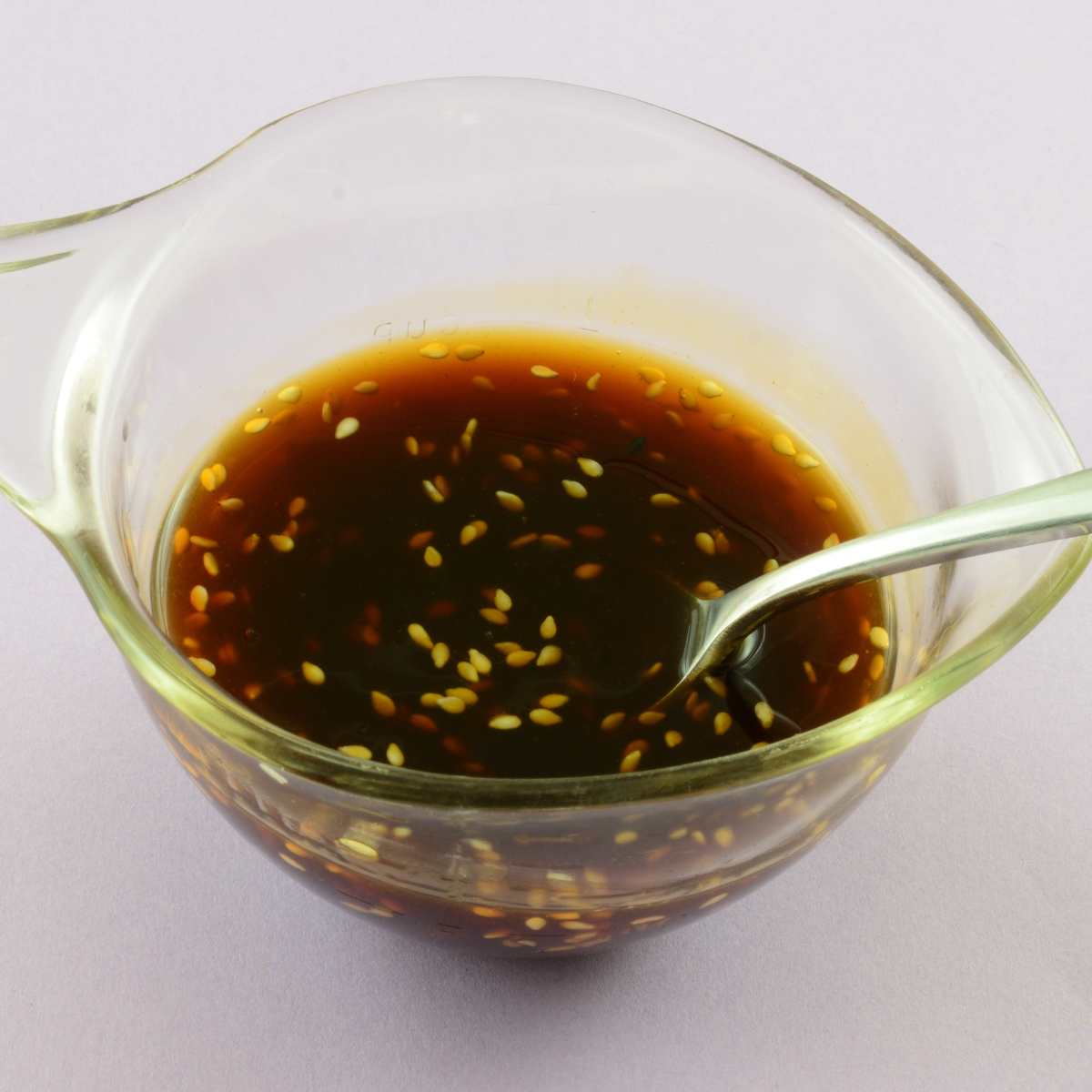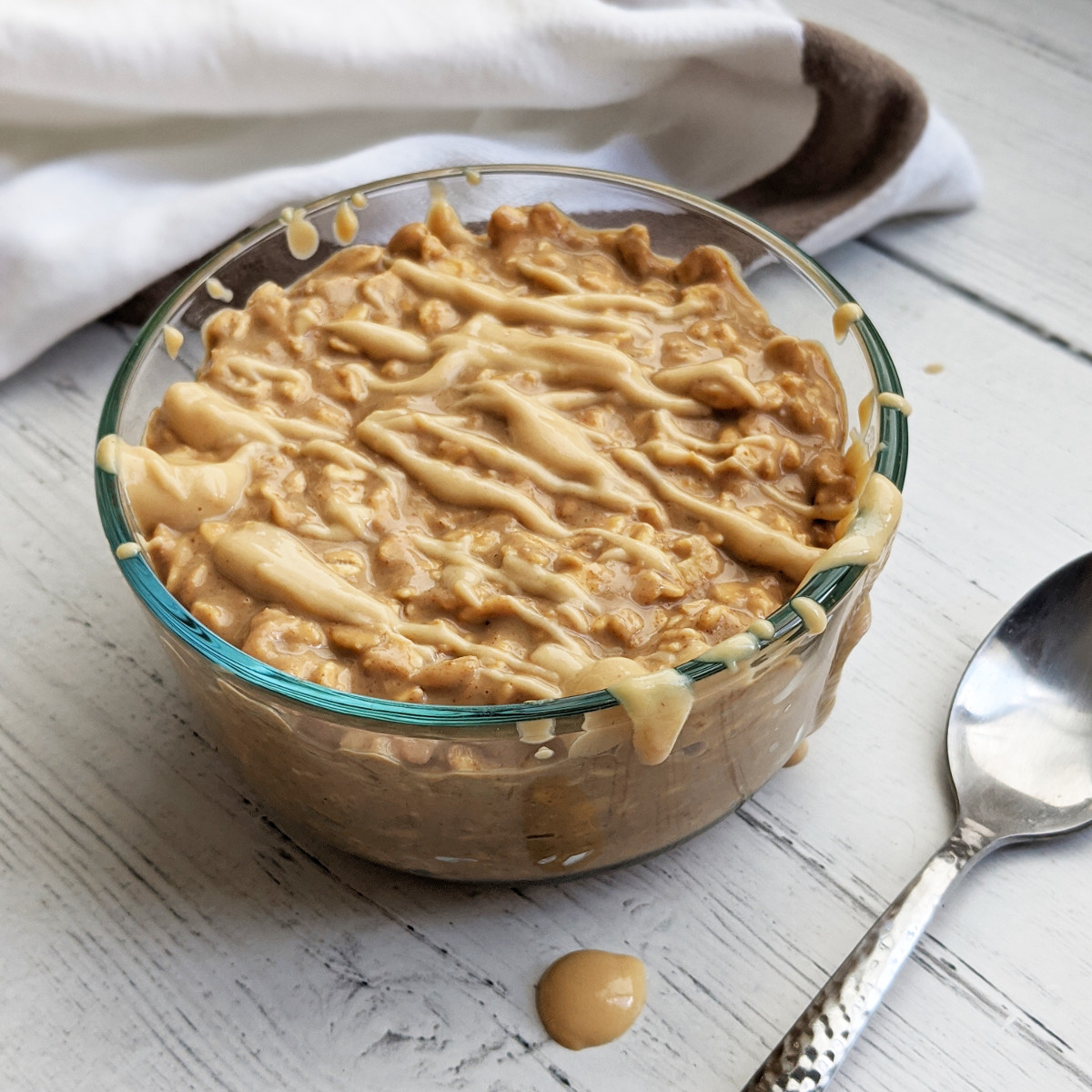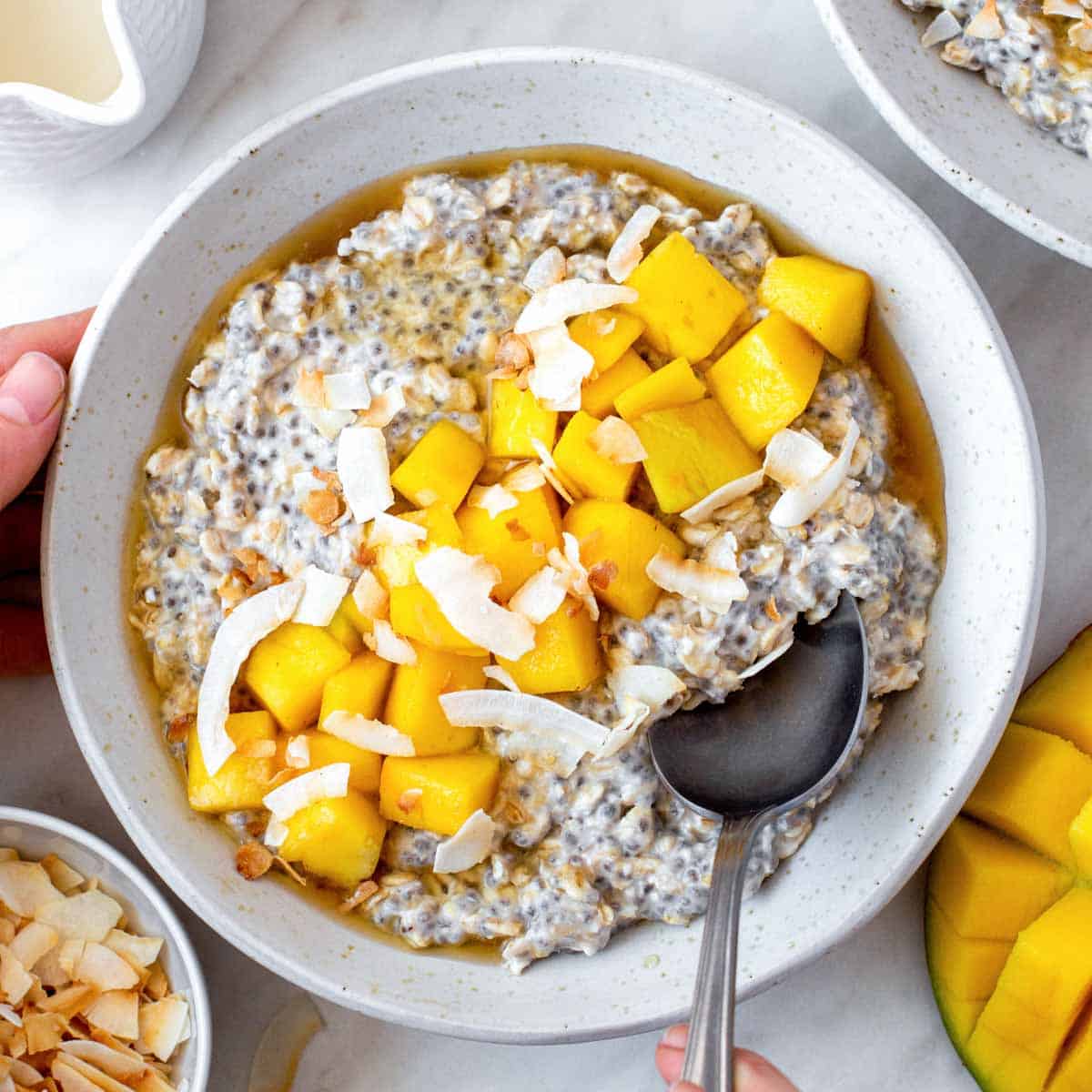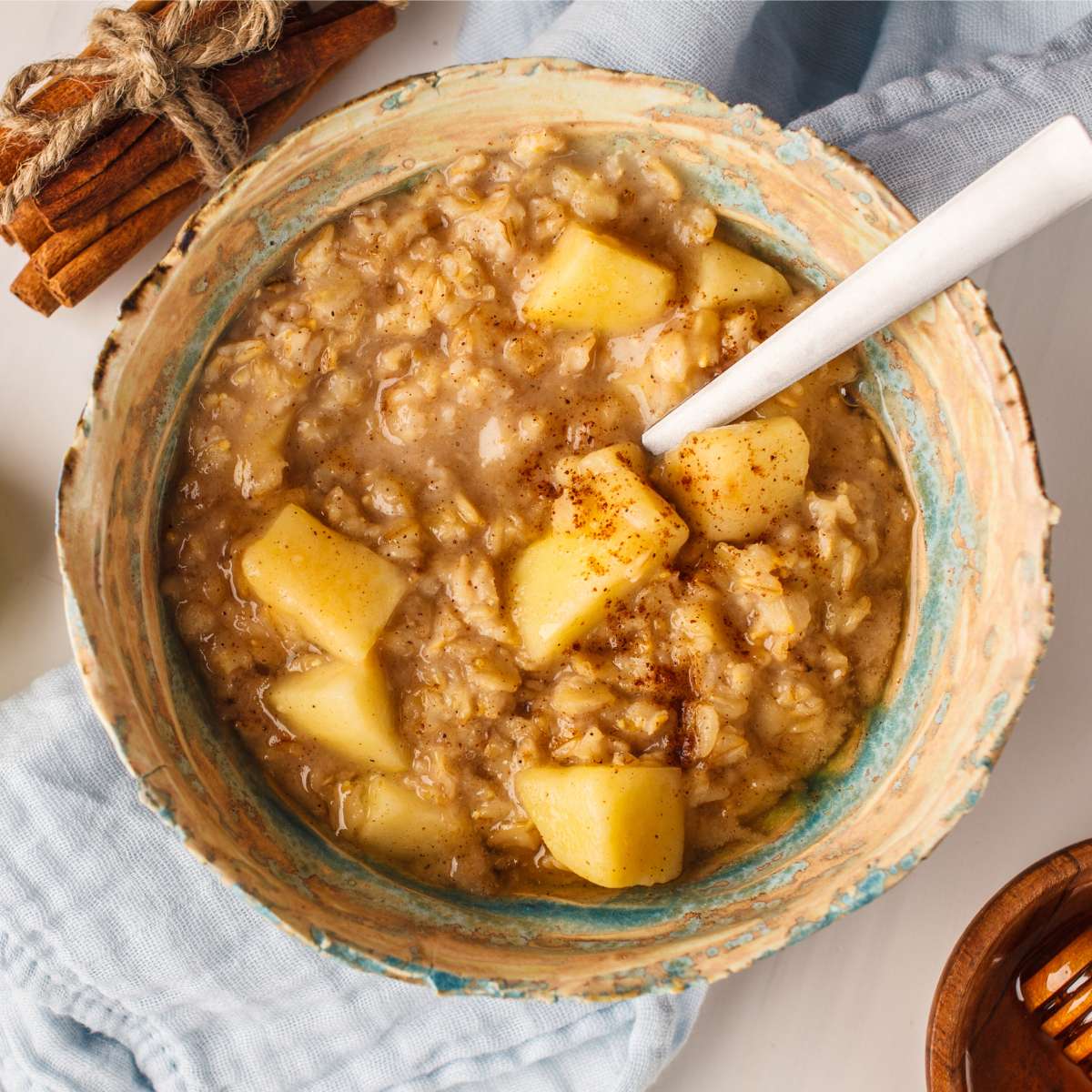This pad pak is a healthy Thai recipe that features crisp veggies and a delicious stir-fry sauce! It’s packed with salty, sweet, and umami flavors that take this simple side dish to the next level. Ready in just 30 minutes!
This post may contain affiliate links. Read my policy page for more information.

Jump to:
What is pad pak?
Pad pak is a traditional Thai dish consisting of stir-fried vegetables, usually coated with a sauce similar to stir fry sauce.
Pad pak directly translates to fried vegetables, with the word “pad” meaning “fried”, and the word “pak” meaning vegetables.
While traditional pad pak is not vegetarian-friendly, because it contains fish sauce and/or oyster sauce, my version is naturally vegan!
Why you’ll love this recipe
This is one of my favorite dishes from Thai restaurants. If you haven’t tried Thai stir-fried vegetables before, here are some reasons you’ll love it:
- A healthy side dish packed with dietary fiber, vitamins, minerals, and antioxidants!
- It’s customizable and versatile, you can use any fresh vegetables and seasonings that you like.
- It’s diet-friendly! This dish is vegan, dairy-free, egg-free, soy-free, and can be made gluten-free with just 1 simple swap.
- Ready in 30 minutes. Don’t have tons of time to cook? No problem! This fuss-free recipe makes for a great weeknight dinner. Perfect for when you don’t have much time on your hands to make an elaborate meal.
Ingredient notes

- Vegetables: I’m using broccoli, baby corn, carrots, red bell pepper, and mushrooms, but any of your favorite quick-cooking veggies can be used here.
- Garlic: Since this recipe is quite simple, make sure to use fresh garlic to add the most flavor, not garlic powder.
- Soy sauce: Make sure to use low-sodium soy sauce to avoid making the recipe too salty. To make it gluten-free, use tamari or coconut aminos instead.
- Maple syrup: For adding sweetness to the sauce without adding refined sugars. You can substitute it with agave syrup.
- Sesame oil: It gives a delicious nutty flavor to the dish but any cooking oil will work here! Or simply omit if you prefer to cook oil-free.
- Rice vinegar: Adds tanginess and acidity to the sauce which balances out the rest of the flavors. It can be substituted with white wine vinegar or apple cider vinegar if needed.
- Spices: You’ll need ground ginger and red pepper flakes to add a spicy pop of flavor to the sauce.
- Vegetarian oyster sauce (optional): Adds a little bit of sweetness and color to the sauce, but if you don’t have it on hand, you can omit it.
Scroll to the recipe card below for the full recipe and measurements.
How to make pad pak
Step 1: First, make the sauce. In a small bowl, whisk the soy sauce, maple syrup, ground ginger, rice vinegar, and red pepper flakes until combined.

Step 2: Heat a wok or a skillet over medium heat and add the sesame oil.
Once sizzling, add the minced garlic and saute for 1 minute, until fragrant. Then, add the vegetables and fry for 7-8 minutes, stirring occasionally.
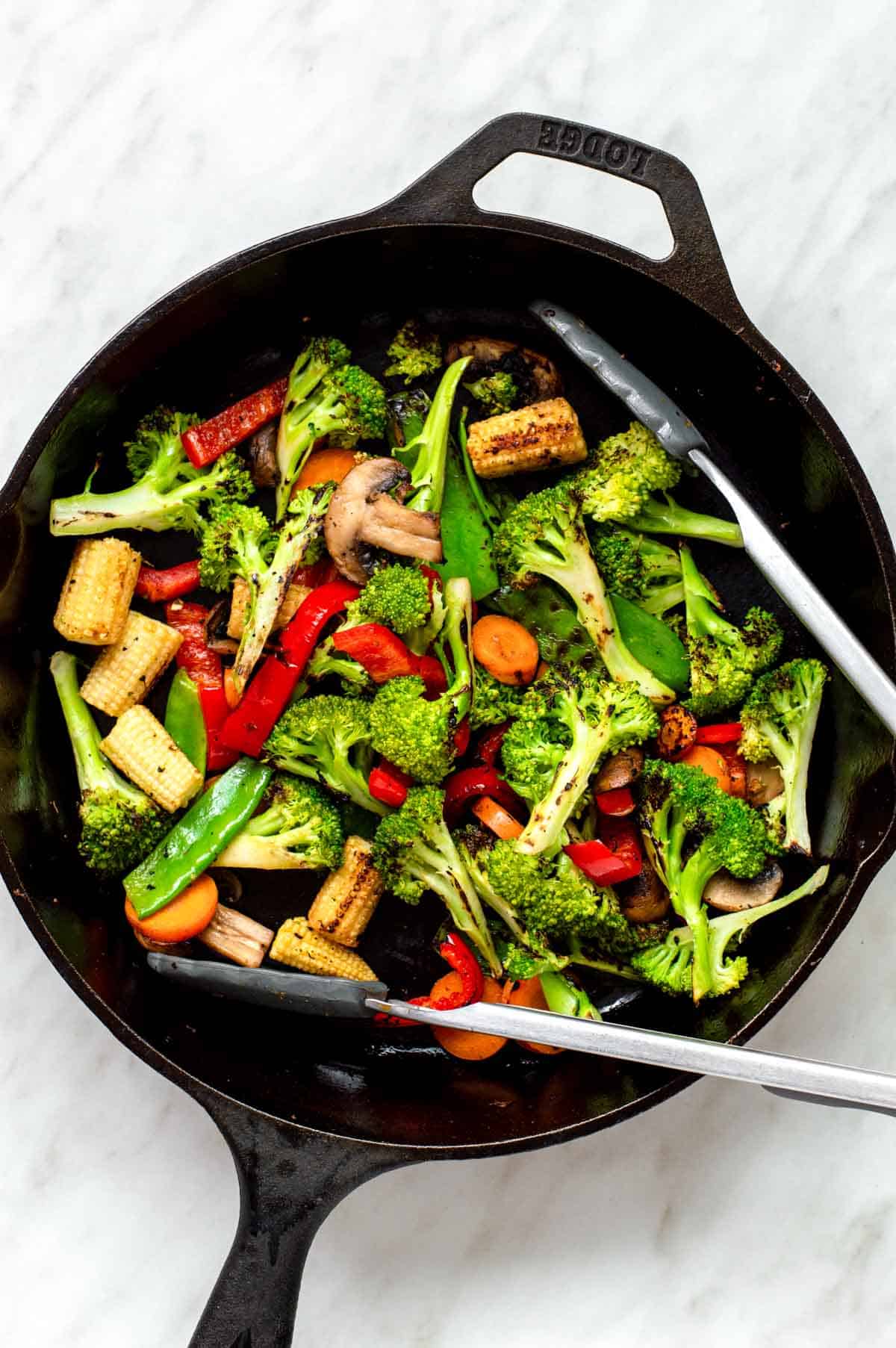
Step 3: Turn the heat to low and pour in the sauce. Stir and cook for 4-5 more minutes, or until the vegetables are well coated and most of the liquid has cooked off.
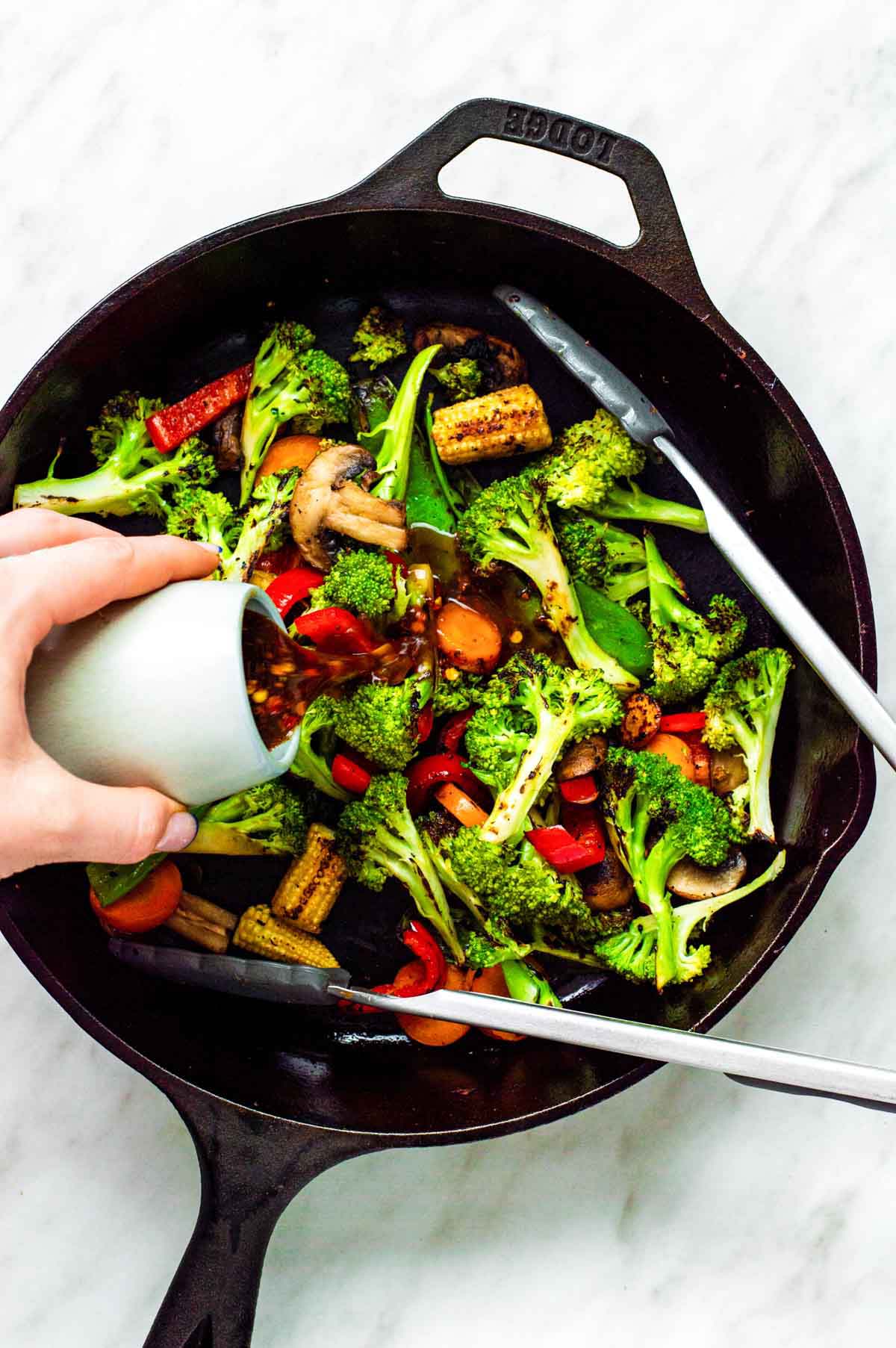
Finally, remove it from the heat, taste, and adjust the seasoning. Add more soy sauce for saltiness, maple syrup for sweetness, or rice vinegar for tanginess.
Serve right away over noodles, a side of rice, or anything you want!
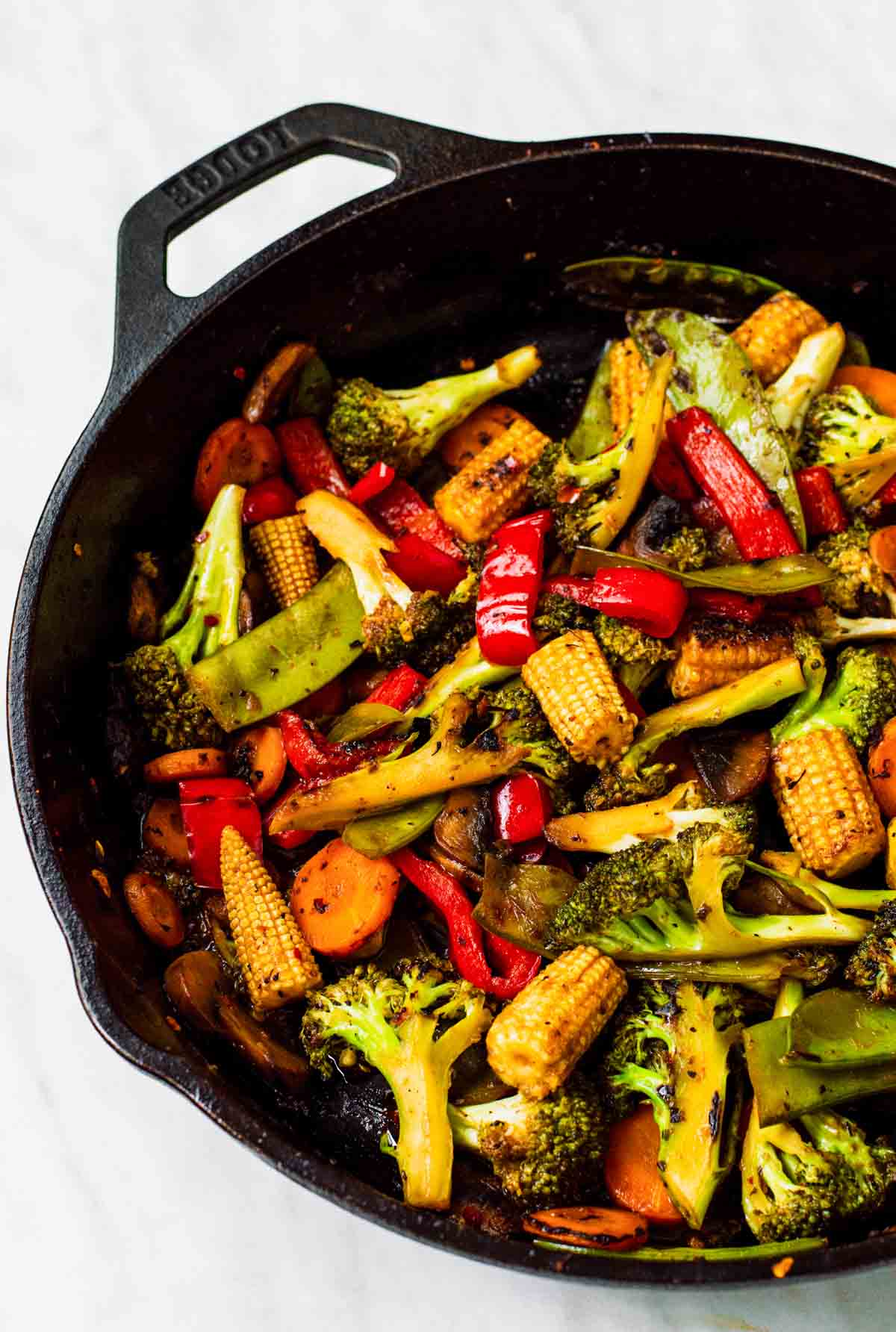
Expert Tips
- Don’t overcook the vegetables. You want to quickly stir-fry them so they’re nice and charred, but still crunchy and fresh.
- Cook in batches if needed. To avoid steaming your vegetables, cook them in separate batches and make sure there is enough space in the pan. You want each piece to have direct contact with the hot surface to get that golden brown exterior.
- Use high heat. Stir-frying is a quick-cooking technique that requires medium-high or high heat. This helps to retain the color, texture, and nutrients of the vegetables while ensuring they don’t become soggy.
- Choose seasonal vegetables. With simple recipes like this, you need to make sure that each ingredient tastes delicious on its own. Using veggies that are in season means they’ll be fresher, riper, and tastier!
- To make it quicker, use pre-packaged stir-fried vegetables that are already chopped.
FAQ’s
Yes, this recipe consists entirely of vegetables which makes it a great source of fiber, various vitamins like vitamins C, A, and K, as well as minerals like potassium, folate, and iron.
Yes, this recipe can work with frozen vegetables in a pinch, although the texture will be different.
No need to thaw them, just add them directly to the hot pan!
Although I don’t recommend it, because the texture changes quite a bit, you can freeze this pad pak. Let it cool to room temperature, then transfer it to a freezer-safe container and freeze for up to 3 months.

Recipe variations
The best part about these stir fry vegetables is they are an easy meal to customize! Here are some simple ways to adjust it to your taste preference:
- Add fresh herbs: To add more flavor, add a handful of Thai basil or fresh cilantro.
- Add noodles: To make it more filling, add any of your favorite noodles such as rice, ramen, soba, udon noodles, etc.
- Make it oil-free: Use vegetable broth instead of sesame oil to saute the vegetables. To add more flavor, add 1 tablespoon of toasted sesame seeds to the sauté. Keep in mind that this will alter the texture and flavor of the final dish.
- Make it more spicy: Add 1-2 teaspoons of sriracha, gochujang, or any chili paste that you like to the sauce.
- Make it less spicy: Omit the red chili flakes and the ground ginger.
Best vegetables for stir fry
One of the best things about this pad pak is that you can add pretty much any vegetables you have in your fridge and it will still turn out delicious.
Here are some ideas of what to add to your next stir fry:
- Red, green, or yellow bell peppers
- Leafy greens such as spinach, kale, or Swiss chard
- Any type of onion such as red, yellow, or green onions
- Red, white, or napa cabbage
- Broccoli or cauliflower
- Green beans
- Bok choy
- Water chestnuts
- Soybean or mungbean sprouts
- Snow peas or snap peas
- Shiitake mushrooms
- Zucchini or summer squash
Serving suggestion
This Thai-inspired pad pak is great served over any steamed rice or noodles but it’s especially good over my curried potato rice.
It can also be served as a side dish to vegan ramen, vegan coconut shrimp, tofu adobo, or this coconut lentil curry.
To make it a complete meal, consider adding a protein source of your choice. Similar to my tofu stir fry, I like to add crispy air-fried tofu or my marinated air fryer tempeh.

Storage
Let the pad pak cool to room temperature then transfer to an airtight container and store in the fridge for 4-5 days.
More Asian-inspired dishes
If you enjoyed this delicious stir-fried vegetable dish then you’ve got to try these other flavorful recipes:
- Enjoy this easy tofu stir fry that’s filling, packing in 30 grams of protein per serving!
- Air fry tempeh in a delicious stir-fry marinade that’s bursting with flavor!
- Drizzle your favorite proteins in this Korean BBQ sauce! It’s spicy, sweet, and tangy, you’ll want to put it on everything!
Want to Save This Recipe?
Enter your email below and we’ll send it straight to your inbox! Plus, get weekly free recipes!
By submitting this form, you consent to receive emails from Health My Lifestyle.
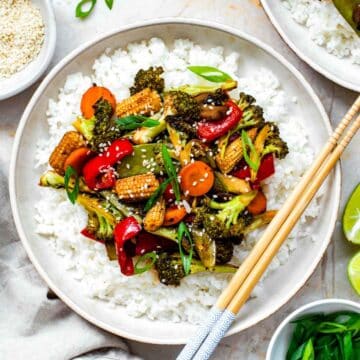
Easy Pad Pak (Thai Vegetable Stir-Fry)
Ingredients
Sauce
- ¼ cup low-sodium soy sauce or use coconut aminos or tamari to make it GF
- 1 tablespoon maple syrup
- 1 tablespoon rice vinegar
- 1 tablespoon vegetarian oyster sauce optional
- 2 cloves garlic minced
- 1 teaspoon ground ginger
- ½ teaspoon red chili flakes or chili paste optional
Vegetables
- 1 tablespoon sesame oil
- 1 medium red bell pepper slices
- 1 large carrot, sliced into rounds
- 1 medium-small head of broccoli chopped into florets
- 1 cup snow peas
- ½ cup baby corn
- 1 cup mushrooms sliced
Instructions
- First, make the sauce. In a small bowl, whisk the soy sauce, maple syrup, ground ginger, rice vinegar, red pepper flakes, and vegetarian oyster sauce (if using) until combined.¼ cup low-sodium soy sauce, 1 tablespoon maple syrup, 1 tablespoon rice vinegar, 1 tablespoon vegetarian oyster sauce, 1 teaspoon ground ginger, ½ teaspoon red chili flakes or chili paste
- Heat a wok or a skillet over medium heat and add the sesame oil. Once sizzling, add the minced garlic and saute for 1 minute, until fragrant.1 tablespoon sesame oil, 2 cloves garlic
- Then, add the vegetables and fry for 7-8 minutes, stirring occasionally.1 medium red bell pepper, 1 large carrot,, 1 medium-small head of broccoli, 1 cup snow peas, ½ cup baby corn, 1 cup mushrooms
- Turn the heat to low and pour the sauce. Stir and cook for 4-5 more minutes, or until the vegetables are well coated and most of the liquid has cooked off.
- Finally, remove it from the heat, taste, and adjust the seasoning. Add more soy sauce for saltiness, maple syrup for sweetness, or rice vinegar for tang. Serve right away over noodles, rice, or anything you want!
Notes
- Fridge: Let the pad pak cool to room temperature then transfer to an airtight container and store in the fridge for 4-5 days.
- Freezer: Let it cool to room temperature, then transfer it to a freezer-safe container and freeze for up to 3 months.
- Add all of the sauce ingredients directly to the pan for easy cleanup.
- Use a pre-sliced package of vegetables. Either fresh or frozen works though the texture will be slightly different with frozen.

